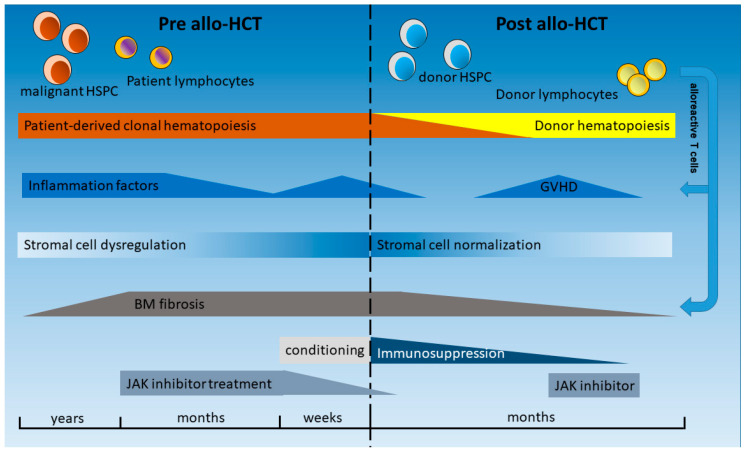Figure 2.
Order of events in the bone marrow (BM) before and after allogeneic hematopoietic stem cell transplantation (allo-HCT) in myelofibrosis. The malignant hematopoietic clone is considered as the origin of subsequent inflammatory alterations and modifications of stromal cells and the extracellular matrix [35]. These alterations finally lead to BM fibrosis [1]. Treatment with JAK inhibitors, such as ruxolitinib, can significantly decrease inflammation but, in most cases, not fibrosis [77,78]. The termination of ruxolitinib treatment and the conditioning regimen before HCT may induce a new increase in inflammation factors and ruxolitinib withdrawal syndrome [79] or sinusoidal obstructive syndrome [80]. After HCT, the elimination of the malignant clone and subsequent replacement by normal donor hematopoietic stem and immune effector cells typically lead to a persistent decrease in inflammation factors [74]. Over time, stromal cells often regain normal functionality, with normalization of extracellular matrix deposition and disappearance of fibrosis. Immunosuppressive medication will be tapered over time and stopped in the majority of patients. However, graft-versus-host disease (GVHD) can lead to an increase of inflammation factors, many of which are similar to the MPN-associated cytokines, albeit without an increase in fibrosis. Accordingly, JAK inhibitors can be used as immunosuppressive drugs in patients with refractory GVHD [81].

